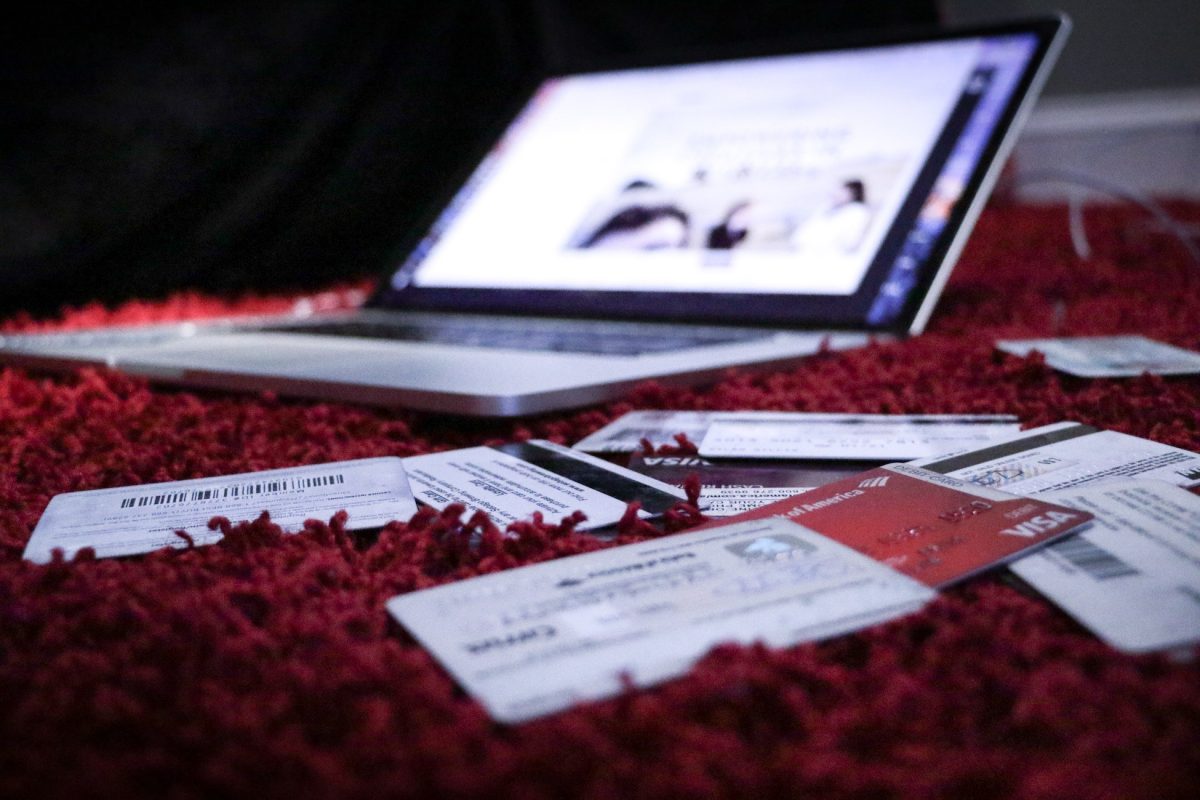Ever wondered how to secure a loan when your credit score is still a mystery—or worse, a myth? Welcome, friend, to the ultimate guide on getting a loan with no credit. Whether you’re a fresh-faced millennial just stepping into the world of finances or a savvy Gen Z’er looking for alternative money moves, you’re in the right place. We’re about to dive into the world of creative financing, unconventional lending options, and strategies to secure funds even when traditional credit just isn’t in your favor.
How to Get a Loan With No Credit Table of Contents
Demystifying Credit: Why No Credit Doesn’t Mean No Loan
Understanding the Loan Landscape for No-Credit Folks
Navigating Your Options: Types of Loans Available Without Established Credit
Constructing a Loan-Worthy Profile: Steps to Build Your Financial Credibility
Alternative Lending Strategies: Getting Creative When Credit Isn’t King
Smart Tips to Boost Your Financial Health—and Your Loan Prospects
Resources and Community Support: Your Next Steps
Transforming Challenges into Opportunities: A Real-Life Perspective
Step-by-Step Blueprint: How to Get a Loan With No Credit
Integrating Financial Wellness Into Your Lifestyle
Demystifying Credit: Why No Credit Doesn’t Mean No Loan
Let’s get one thing straight: not having an established credit history isn’t a death sentence for your financial goals. In fact, many lenders are learning that a lack of credit history doesn’t automatically equal high risk. It might simply mean you’re new on the scene or that you’ve been living your life without accumulating debt. Think of it as being a blank canvas—full of potential and ready for a masterpiece.
Traditionally, banks have relied heavily on credit scores to make their lending decisions. But in today’s fast-paced, innovative financial landscape, alternative methods are coming to the forefront. Lenders are exploring ways to assess your ability to pay back a loan by looking at factors like income, employment history, and even your bank account behavior. This shift is especially welcome news for those who have yet to build a robust credit profile.
So, before you worry that a “no credit” status is equivalent to a financial dead end, take a deep breath. We’re here to guide you through various strategies and options that can help you secure the funds you need—without a traditional credit record.
Understanding the Loan Landscape for No-Credit Folks
When you’re new to the world of credit or have had some bumps along the way, the typical route to a loan—bottom-line credit scores and rigid lending criteria—might seem like a locked door. But guess what? There are plenty of alternatives, and knowing your options is key.
Lenders today are more creative than ever. They’re developing technologies and processes that go beyond the old-fashioned credit score. Let’s break down the usual suspects you might encounter:
- Income-Based Evaluations: Some lenders focus on your ability to pay by examining your steady income streams, employment stability, and cash flow. They’re interested in whether you consistently bring home a paycheck.
- Bank Statement Loans: These are looser than traditional loans, using your bank statements to assess your financial health over the past few months. Your transaction history tells a story, and lenders are learning to read it.
- Co-Signer Options: Having a reliable co-signer with an established credit history can significantly boost your chances. This person essentially vouches for your financial responsibility.
- Collateral Loans: If you have assets like a car or electronics, you might consider secured loans. These loans are backed by collateral, lowering the risk for lenders and improving your chances of approval.
Each of these options has its own quirks and benefits. Your best move? Understand your own financial landscape and choose the path that fits your circumstances like your favorite pair of jeans.
Navigating Your Options: Types of Loans Available Without Established Credit
Securing a loan with no credit might sound like trying to win the lottery—but it’s really more about leveraging alternative criteria. Let’s take a closer look at some popular loan options:
Bank Statement Loans
Gone are the days when a credit report was the be-all and end-all. Bank statement loans use your account history to demonstrate your spending habits and income patterns. Lenders analyze deposits, expenses, and the overall picture of your financial life. This loan type is particularly popular among self-employed individuals, freelancers, and gig workers who may not have a traditional paycheck or credit history.
Sound promising? It is—and while the documentation might seem a bit more personal since you’re sharing your bank details, it’s an effective way to prove you’re financially responsible.
Personal Loans from Alternative Lenders
In today’s digital age, a new crop of online lenders is catering explicitly to borrowers with thin or nonexistent credit histories. These alternative lenders review factors like your current income, employment history, and even social media activity to form a holistic view of your financial health. The approval process is often quicker and more flexible than traditional banks.
Just remember: while it’s easy to get excited about online loans, always check the fine print. Interest rates and fees can vary widely across these platforms, so do your homework.
Co-Signed Loans
A co-signer is like having a financial backup singer—they add harmony to your loan application by contributing their credit standing. This option might be ideal if you have a family member or friend with good credit who believes in your responsible money management. While it enhances your loan prospects, consider the implications: if you default, your co-signer’s credit takes a hit.
Use this option wisely, and ensure that both parties clearly understand the responsibilities involved.
Secured Loans
If you’ve got some valuable asset lying around, a secured loan might do the trick. By offering up collateral—be it your car, a piece of jewelry, or even your gaming setup—you reduce the risk for the lender. In return, secured loans typically offer lower interest rates and more favorable terms. The downside? If you can’t repay the loan, you risk losing your collateral.
Weigh the pros and cons carefully, and choose a secured loan only if you’re confident in your repayment ability.
Credit-Builder Loans
These aren’t loans in the traditional sense—they’re designed primarily to help you build credit. How do they work? The money you borrow is held in a savings account, and as you make payments, the lender reports your activity to the credit bureaus. Once you’ve fully repaid the loan, you gain access to your funds, along with a freshly minted credit history. It’s a win-win situation if your goal is to kickstart your financial journey.
Even if you’re not in urgent need of cash, a credit-builder loan can be a key stepping stone toward future financial opportunities.
Constructing a Loan-Worthy Profile: Steps to Build Your Financial Credibility
So, you’ve realized that a lack of credit doesn’t have to hold you back. The next step is constructing a compelling case for any lender you approach. Here are some strategies to build your own loan-worthy profile:
Step 1: Demonstrate Consistent Income
Lenders want to see that you have regular, reliable income—even if you’re self-employed, freelancing, or working gigs. Pay stubs, bank statements, or detailed documentation of your income streams can serve as proof that you’re financially stable. The more consistent your income appears, the lower your perceived risk.
Step 2: Maintain a Robust Bank Activity History
While your credit history might be empty, your bank statements are a treasure trove of data. Regular deposits, smart spending habits, and a steady cash flow can all signal to lenders that you’re responsible with money—even without a formal credit score. Consider organizing your statements and even using budgeting apps that can generate summary reports to showcase your financial discipline.
Step 3: Keep Your Debts at Bay
If you have any outstanding bills, loans, or credit card balances, focus on managing them diligently. Even if your credit history is minimal, evidence of responsible debt management can boost a lender’s confidence. Stay on top of your payments and avoid any red flags like late fees or defaults.
Step 4: Leverage References and Proof of Responsibility
If you’ve been renting for years, consider asking your landlord for a letter of recommendation. Similarly, utility bill payments, mobile phone contracts, and even subscription services can indirectly evidence your reliability. A strong reputation in these areas works in your favor when traditional credit markers aren’t available.
Building a loan-worthy profile is all about showcasing your financial habits through other reliable indicators. With a bit of creativity and thorough record-keeping, you can turn that “no credit” dilemma into an inspiring story of financial responsibility.
Alternative Lending Strategies: Getting Creative When Credit Isn’t King
If traditional banks aren’t willing to roll out the red carpet, alternatives abound. Let’s explore some creative financing strategies that can bridge the gap until you’re ready to step into conventional lending:
Peer-to-Peer (P2P) Lending
P2P lending platforms connect borrowers directly with individual investors. Instead of relying on a bank’s stringent criteria, your application is reviewed by people looking to earn a return on their money. P2P loans are often more flexible and tailored to suit borrowers with less conventional backgrounds. Plus, you might find the process to be a lot more human than dealing with faceless institutions.
Community Lending and Microloans
Microloans are typically small amounts offered by community organizations or non-profits that believe in helping people who have been left out of the traditional system. These programs are particularly popular among underrepresented communities and startup entrepreneurs. Although the loan amounts might be modest, they can provide essential capital for emergencies, business ventures, or other investments.
Family and Friends as Financial Backers
Sometimes your best loan officer isn’t at a bank at all—it’s right at home. Borrowing from family or friends can be a great way to secure funds without the formality and fees of a traditional loan. Just be sure to set clear terms and put agreements in writing to protect both your relationship and your financial interests.
Credit Union Alternatives
Credit unions are usually more community-oriented and flexible than larger banks. Many credit unions offer tailored products for those with limited credit histories. Their focus on serving members rather than maximizing profit means they might be more willing to consider your overall financial picture instead of just a credit score.
By diversifying your search and exploring these alternative strategies, you can access funds without feeling cornered by a traditional credit bureau’s report.
Smart Tips to Boost Your Financial Health—and Your Loan Prospects
While you’re pursuing a loan without credit, why not use the opportunity to boost your overall financial health? Here are some actionable tips to get both the money and the mindset you need for lasting financial success:
Create a Stellar Budget
Draft a budget that details your income and expenses. This not only helps you manage your money better but also provides tangible evidence of your financial discipline to potential lenders. A well-planned budget is the foundation of both financial stability and a convincing loan application.
Embrace Digital Money Management Tools
Use apps and online tools to track your spending, savings, and investments. Many of these platforms offer visual summaries and trends over time, which can be handy when you need to demonstrate your consistency and fiscal responsibility.
Set Up an Emergency Fund
Having a reserve of cash not only prepares you for unexpected expenses but also signals to lenders that you’re proactive and resilient. Try to save a little bit from each paycheck—even small amounts add up over time.
Educate Yourself About Financial Wellness
Arm yourself with knowledge. There’s a wealth of free or inexpensive resources online that cover everything from budgeting and savings strategies to advanced investment techniques. The more you know, the better equipped you are to make smart decisions that improve your financial outlook.
Network and Seek Mentorship
Reach out to financial mentors, join online forums, and participate in community groups. Sharing experiences and insights with others in the same boat can provide both moral support and practical tips on how to navigate the loan process without a credit history.
These smart tips not only improve your chances of getting approved for a loan but also set you up for long-term financial well-being.
Resources and Community Support: Your Next Steps
Navigating the complex world of loans with no credit can sometimes feel like you’re wandering a maze without a map. That’s why it pays to tap into the power of resources and community support. Here’s how you can round out your strategy:
Financial Education Platforms
Websites like Investopedia, NerdWallet, and The Balance are gold mines for practical advice and tutorials. They break down core concepts like budgeting, credit-building, and loan management into bite-sized lessons that are easy to digest—even if you’re short on time or patience.
Credit Counseling and Financial Coaching
If you’re feeling overwhelmed, a session with a credit counselor or financial coach can go a long way. These professionals specialize in helping you understand your financial situation and developing a strategy to enhance your credit profile—even when you’re starting from scratch.
Online Communities and Forums
Platforms like Reddit’s r/personalfinance, personal finance Facebook groups, and various fintech blogs offer vibrant communities where you can share experiences and ask questions. Often, the advice you receive from someone who’s been in your shoes can be far more relatable—and sometimes fun—than traditional financial advice.
Local Workshops and Seminars
Many community centers, libraries, and local nonprofits host free or low-cost workshops on financial literacy. These events provide personalized guidance and an opportunity to connect with others who share your goals.
Taking advantage of these resources not only sharpens your money management skills but also expands your network—both of which can open doors to alternative financing options when traditional paths seem blocked.
Transforming Challenges into Opportunities: A Real-Life Perspective
It might feel like trying to get a loan with no credit is an uphill battle, but rest assured: you’re not alone. Many people have faced the daunting challenge of proving their worth to lenders without a long credit history.
Case Study: Jenna’s Journey from Financial Newbie to Loan Success
Jenna, a recent college grad with dreams of starting her own online business, had one major hurdle: no credit history. Instead of feeling discouraged, she decided to build her financial reputation from scratch. By creating a detailed budget, documenting every gig and freelance job, and using a credit-builder loan, she slowly but surely built a foundation that potential lenders could trust. When she finally applied for a loan from an alternative lender who considered her vibrant bank statement, the application was approved—and her entrepreneurial dreams took off.
Case Study: Mark’s Creative Coping Strategy
Mark, who had always been too busy to worry about conventional credit, discovered that his steady freelance income and meticulous record-keeping opened alternative doors. By opting for a secured loan using his prized vintage guitar as collateral, he managed to secure just enough cash to cover an unexpected business expense. Mark’s story is proof that sometimes, thinking outside the box pays off—literally.
These real-life examples highlight that your grant or loan approval doesn’t solely depend on a credit score. It depends on your creativity, preparedness, and willingness to present yourself as a trustworthy borrower.
Step-by-Step Blueprint: How to Get a Loan With No Credit
Ready for the actionable part? Here’s a step-by-step blueprint that lays out exactly how to secure a loan even if your credit history is blank or nearly so.
Step 1: Assess Your Financial Situation
The first order of business is to take a hard look at your current financial standing. Gather your bank statements, income records, proof of employment, and any other documents that highlight your financial behavior. Creating a snapshot of your finances not only helps you understand where you stand but also provides the necessary material for lenders to evaluate your application.
Step 2: Explore Alternative Lenders
Don’t limit yourself to big banks. Look for alternative lenders such as online platforms, credit unions, or even community banks that specialize in non-traditional lending. Compare their terms, interest rates, and application requirements. Use comparison websites and read reviews to find a lender that suits your needs.
Step 3: Prepare Your Documentation
With alternative lenders in mind, prepare the paperwork that demonstrates your financial health. This might include recent bank statements, proof of income (like pay stubs or tax returns), and any letters of recommendation from employers or landlords. Show the lender that while you may lack a credit score, you excel at managing your money.
Step 4: Consider a Co-Signer or Collateral
If you’re still facing some skepticism from lenders, consider asking a trusted friend or family member with a solid credit history to co-sign on your loan. Alternatively, assess if you have any valuable assets to use as collateral. Either route can increase your chance of approval.
Step 5: Apply and Follow-Up
Once you’ve identified the right lender, submit your application along with all the supporting documents. Keep communication lines open—if the lender needs additional information, respond promptly. A little extra effort here can make a significant difference in the overall process.
Step 6: Use the Loan Wisely and Build Credit
After you secure the loan, use it for its intended purpose—whether that’s starting a business, covering an emergency, or consolidating debt. Most importantly, make every payment on time. This isn’t just about repaying a loan; it’s about laying the groundwork for a future credit history. Think of this as your financial puberty—a crucial transition period where good habits will help you blossom.
Following this blueprint won’t just get you a loan; it’ll also set you on the path to stronger credit in the future. Every timely payment and every responsible financial decision adds a brick to the foundation of your creditworthiness.
Integrating Financial Wellness Into Your Lifestyle
Beyond loan applications and alternative lending, your overall financial wellness can significantly impact your long-term financial opportunities. Here are some ways to integrate smart money habits into your everyday life:
Budget and Track Your Spending
Develop a habit of tracking every dollar, whether it’s through a digital budgeting app or a simple spreadsheet. Understanding where your money goes is the first step to mastering it. It might not sound glamorous—but trust us, the freedom that comes with financial clarity is worth every minute.
Automate Savings
Set up automatic transfers to your savings account. Automating your savings not only builds your emergency fund but also demonstrates to future lenders that you’re serious about planning for tomorrow.
Invest in Financial Education
From online courses to local workshops, invest time in understanding personal finance. Financial knowledge is power, and the more you know, the more options you’ll have when it comes to money management and credit-building.
Stay Connected With Your Community
Whether it’s through online forums, local meet-ups, or community centers, engaging with others who share your financial goals can provide support and accountability. You’ll not only learn new strategies but also discover that you’re far from alone in your financial journey.
By integrating these steps into your lifestyle, you’re not just solving a short-term problem—you’re investing in a future where financial freedom is not only possible, but entirely within reach.
FAQs: How to Get a Loan With No Credit?
We know you might have questions swirling around like that one misbehaving notification on your phone. Here are some frequently asked questions to address common concerns:
1. Is it really possible to get a loan with no credit?
Absolutely. Lenders are increasingly looking at factors beyond the traditional credit score, such as income, bank statements, and consistent financial behavior.
2. What are bank statement loans?
Bank statement loans evaluate your financial health based on your bank deposits and spending patterns over a specified period rather than relying solely on credit scores.
3. Should I consider getting a co-signer?
If you have someone with a strong credit history who believes in your financial responsibility, a co-signer can boost your approval chances. Just be sure to agree on clear repayment terms.
4. What alternatives exist if I can’t secure a traditional loan?
Look into personal loans from online lenders, peer-to-peer lending platforms, microloans, or even secured loans where you can use collateral as leverage.
5. How can I build my credit while repaying a loan?
Use loans designed for credit building, make all payments on time, and maintain good financial habits like budgeting and saving. This establishes a solid credit history for future endeavors.
6. Are credit-builder loans a good option?
Yes, they’re designed to help you build credit. With these loans, funds are held in a savings account until you repay the loan, and your positive payment history is reported to credit bureaus.
7. How do alternative lenders assess my loan application?
Alternative lenders focus on metrics like consistent income, stable bank activity, and overall financial responsibility rather than just a credit score.
8. What should I do if my application is denied?
Consider alternative financial products, reassess your documentation for any gaps, or consult a financial advisor to help improve your overall financial strategy.
Your Journey to Financial Empowerment
Securing a loan with no credit is more than a transaction—it’s a stepping stone towards greater financial independence. By exploring alternative lending options, building a solid financial profile, and staying smart about your money, you’re not just borrowing cash. You’re joining a new wave of financially empowered individuals who don’t let traditional metrics define their potential.
Every step you take—from diligently tracking your income to embracing modern lending alternatives—moves you closer to a future where financial opportunities are abundant. Remember, the path to financial wellness is rarely linear. It’s about persistence, creativity, and a willingness to explore new routes when the old ones are blocked.
So whether you’re handling a surprise expense, kickstarting a business venture, or simply building your credit profile for future milestones, know that your determination and smart choices pave the way for success. Embrace the journey with confidence, knowing that every informed decision brings you closer to the financial freedom you deserve.
Get out there, take charge of your financial future, and celebrate every milestone along the way. Your journey to financial empowerment is just beginning—and it’s going to be one heck of an inspiring ride.













